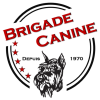Assessment
Behavioral, skill or ability
What is an assessment?
L’évaluation est une rencontre sur rendez-vous à laquelle le ou les maîtres doivent être présents. Lors de cette rencontre nous ciblerons vos attentes et vos besoins face à votre chien, puis nous évaluerons, à partir de critères précis, les comportements, le tempérament, les capacités d’apprentissage et les aptitudes de votre chien afin d’être en mesure d’établir avec vous le meilleur programme d’éducation possible.
À la suite de cette rencontre nous vous indiquerons le nombre de rencontres requises ainsi que la durée de chacune des rencontres.
Nous pouvons faire cette évaluation dès 3 mois, âge à partir duquel un chiot peut commencer à développer son talent. Les résultats de cette évaluation nous permettront d’établir un plan du cours sur mesure pour vous et votre compagnon à quatre pattes (durée et coût).
Informations
By appointment from Tuesday to Saturday
Starting at $59.99 plus tax
The assessment at the school is by appointment and the exact amount will be confirmed to you by telephone when making the appointment or in response to your online registration request.
Evaluation available in private meeting 30 to 45 minutes at our school

Assessment / Consultation
The Canine Brigade now offers online booking. If you are already a customer, call 514-645-2020 to obtain your password.
Otherwise, you can create an account with the button below.
